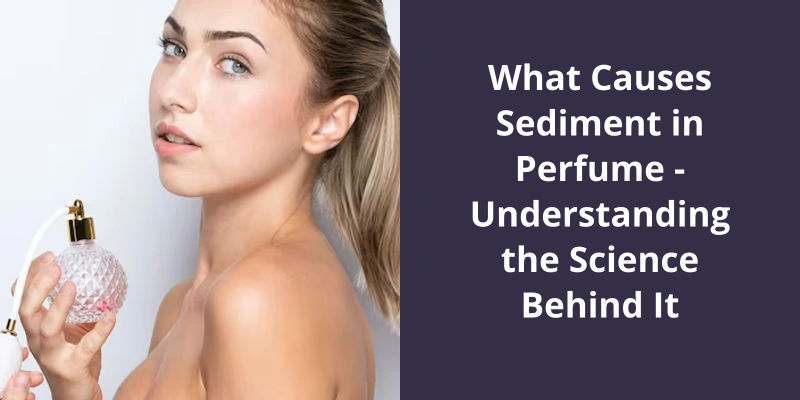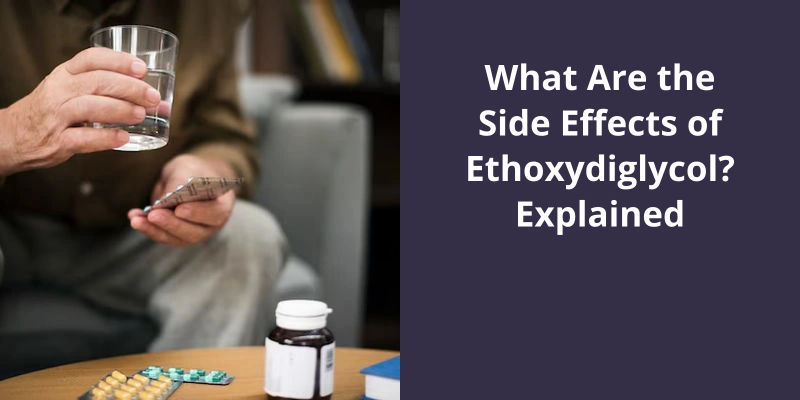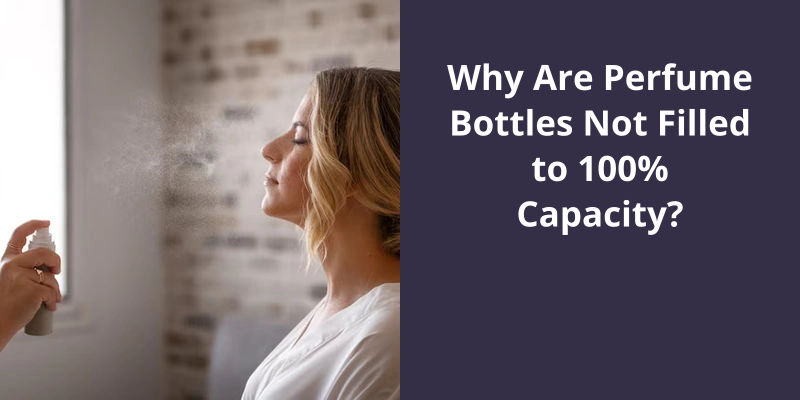Sediment in perfume can be triggered by various factors. Often, it’s due to a reaction between the fragrance ingredients and the bottle. The ingredients may not mix well, causing particulate matter to form. Another possibility can be temperature changes. High temperatures can cause some ingredients in the perfume to dissolve or precipitate, resulting in visible sediment. Exposure to sunlight can also lead to sediment formation, as it can cause the perfume ingredients to break down. Lastly, older perfumes can develop a sediment residue over time as part of a natural aging process, particularly if they contain a high percentage of natural essential oils.

Why Does My Perfume Have Sediment?
The main reason why perfume may have sediment is due to the quality of ingredients used to create the fragrance. Often, when essential oils and natural essences are incorporated into a perfume, they aren’t properly filtered before being mixed in with the other ingredients. This can cause particles to settle at the bottom over time, creating sediment in the bottle. Fragrances with a higher concentration of natural ingredients are more prone to this problem.
Synthetic fragrances are known to have a shorter shelf life and can easily break down in the presence of high humidity or heat. When this happens, the fragrant oils and chemicals can separate from one another, resulting in the formation of sediment at the bottom of your perfume bottle.
Over time, the alcohol and water in a fragrance can evaporate, leaving behind a thicker, syrupy liquid that can settle at the bottom. This is more likely to occur with older perfumes that havent been used in a while, as they’ve had more time to break down and evolve.
Lastly, it’s important to note that sediment in your perfume doesn’t necessarily mean that it’s gone bad or expired. While it’s always a good idea to check the expiration date on your fragrance, sediment formation isn’t always a sign of spoilage. If your perfume still smells and looks good, theres no need to throw it out just yet. However, if you notice any unusual changes in the scent or appearance of your perfume, it’s best to consult with the manufacturer or a fragrance expert to get their advice.
How to Properly Store Your Perfume to Prevent Sediment Formation
To properly store your perfume and prevent sediment formation, keep it in a cool, dry, and dark place such as a closet or drawer. Avoid exposing it to sunlight and extreme temperatures. Store it upright and avoid shaking it, which can disrupt any settling particles. Lastly, be mindful of the expiration date and dispose of perfume that’s gone bad.
Just like any other product, perfumes may degrade over time and exposure to certain factors like light, air, moisture, and heat can impact their lifespan. While some fragrances may last for years, others spoil and develop a moldy smell, making them unwearable. In this article, we’ll explore the reasons why perfumes may go bad, how to tell if your fragrance has gone off, and how to properly store your perfume to extend it’s shelf life.
Can Perfumes Get Moldy?
It’s a common misconception that perfume has an unlimited shelf life. In reality, perfume and cologne can go bad and even grow mold over time. This can happen when the fragrance is exposed to air, light, or heat. Environmental factors can also play a role in the longevity of a fragrance.
Mold growth can occur if perfume is stored in a damp environment or if there’s moisture present in the bottle. The mold can then spread throughout the fragrance, changing it’s smell and potentially causing health problems if it’s applied to the skin. If mold is present, it’s best to dispose of the fragrance immediately.
Over time, the fragrance can degrade, causing it to smell different from how it originally did. This can be due to a variety of factors, including exposure to air and light. The scent may become weaker or more pungent than it was originally intended to be.
To prolong the life of a fragrance, it’s important to store it properly. This means keeping it away from direct sunlight, heat, and humidity. It’s also advisable to keep the fragrance in it’s original packaging, as this can provide added protection against environmental factors. Additionally, it’s important to use perfumes within a reasonable time frame to ensure maximum freshness.
Conclusion
In conclusion, the sediment found in perfume isn’t a cause for alarm. It’s merely a sign that the natural oils and essences in the perfume are starting to break down, which is a natural process. The coagulation of these oils and essences is also a result of the alcohol and water inside the perfume evaporating over time. This concentrated residue is actually a good thing as it means that the perfume will last longer and be more potent in fragrance. It’s important to remember to store your perfume correctly to ensure that it lasts as long as possible and retains it’s desired scent. Overall, understanding the process of natural coagulation in perfume can help us appreciate the complexity and beauty of fragrance.





